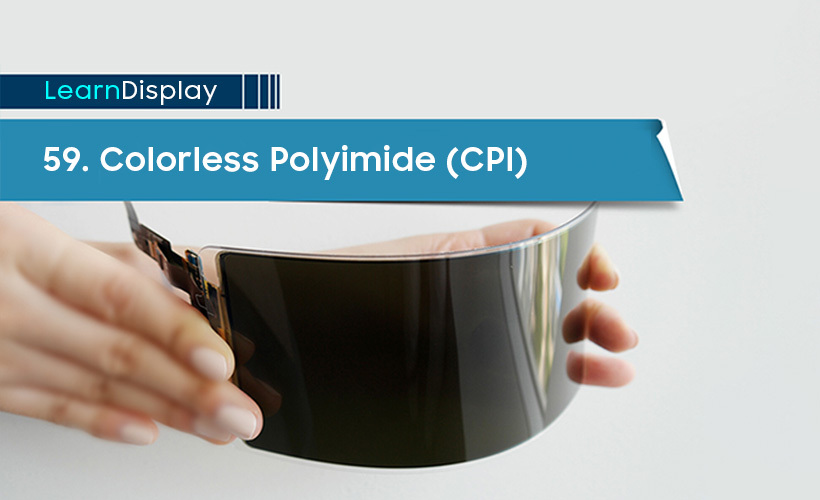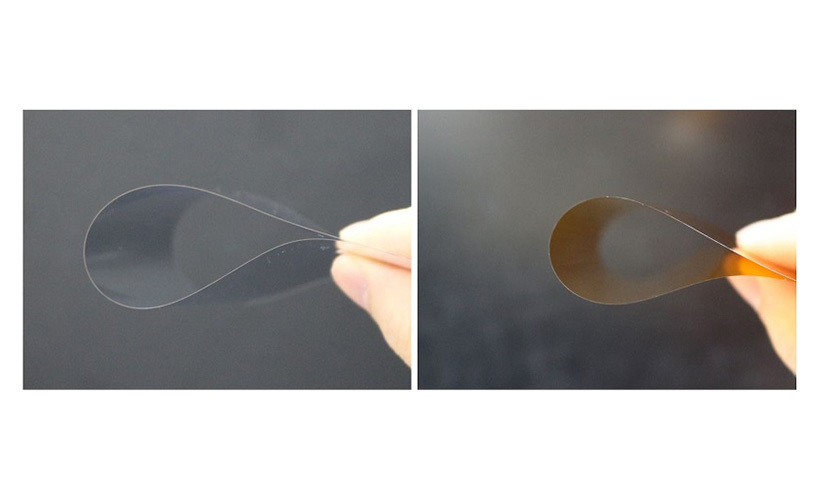
A colorless and transparent polyimide (CPI) film is used to manufacture cover windows that protect flexible display panels.
While polyimide (PI) material offers many advantages such as its chemical and thermal resistance, its key disadvantage is its yellowish-brown tint. To address this issue, polyimide’s chemical structure has been modified to develop a clear alternative: Colorless polyimide.

The chemical structure of polyimide demonstrates a number of aromatic rings (C6H6-, in the shape of a hexagon), which gives it excellent chemical and thermal resistance. These aromatic rings tend to absorb light in the wavelengths of 400nm to 500nm, appearing brown to the human eye.

In order to transform polyimide (PI) into a clear material, the aromatic rings in PI are often restructured by substituting/adding a trifluoromethyl group (-CF3), an ether group (-O-) or a sulfon group (-SO2). This requires extensive technical know-how.
As it is made of plastic, colorless polyimide is light and flexible. This means it can be made thin, which is ideal for cover windows in flexible display panels used in foldable and rollable displays.
Colorless polyimide (CPI) was used in the cover window for unbreakable display panels developed by Samsung Display in 2018, which passed the durability tests carried out in accordance with the U.S. military standards by the global safety science company, UL (Underwriters Laboratory). It is also found in the Galaxy Fold, making it a successful case study for commercialized display technology.



